Old, and Some New, Photographs of Woodbridge & Melton
Between 1811 and 1815 the house in this photograph was built near the junction of Burkitt Road and Pound Lane.
A cottage was also erected alongside Pound Lane. It is likely that this cottage was on the site of the Pound (Pin Fold) because, by 184, there was field beyond the National School which was named Pound Field.
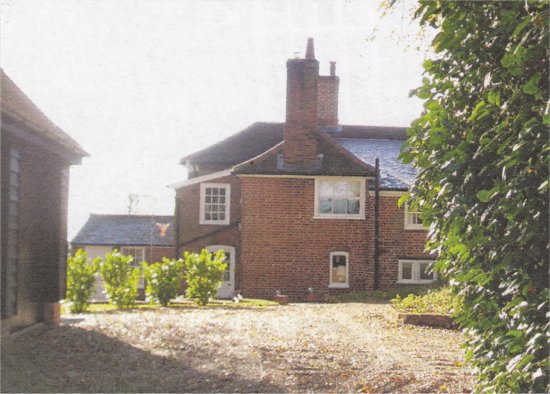
By 1827 a ‘mansion’ had been built in extensive grounds called Mount Pleasant. These grounds, which were behind a 5ft stone wall, ran all the way from the house at the junction of Burkitt Road and Pound Lane up to the National School.
By 1840 this mansion was called Burkitt Lodge, presumably because two large fields on the other side of Bridewell St were called Upper Burkitt and Burkitt Meadow. Burkitt Lodge has since been named Woodbridge Lodge. Since 1926 a number of additions have been made to the building which has since become a retirement home.
By 1989 the area one called Mount Pleasant had been divided into five strips of land that were roughly perpendicular to the Burkitt Road and there was a substantial property on each strip. Twenty two years later two more strips had been added and there was a house on each of them.
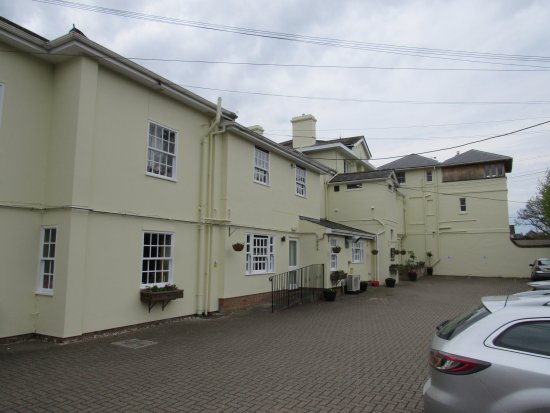
The National School, now St Mary’s Primary School opened in October 1813 and pupils had to pay ˝p a week. This was increased to 1p a week in 1818 and parents who could afford it were asked to pay 24s a year. The increase in school fees was hard for poor parents and the school records show that some children were excluded for non-payment of fees.
The National School was in the thatched building in this photograph.
From 1844 to 1863 the National School rented what had been the parish workhouse and opened an infant department there. When the Poor Law Union sold this building in 1863 the infant department moved into the former theatre across the road.
When the government declared, in 1870, that it was going to participate directly in elementary education it clearly stated that voluntary bodies – e.g. British Schools, the National schools – would continue to play a major roll. Such schools were given grants the size of which depended upon reports made by School Board inspectors. Over the years these grants fell as the School Boards set higher standards. In 1890 legislation was passed to make elementary education free. This immediately made the imbalance between the funding of Board Schools and voluntary schools worse.
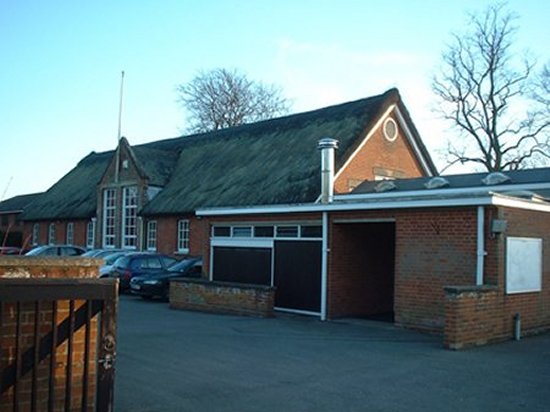
In 1907 the non-conformists closed the British School on Castle Street but the Church of England continued to support the National School. In 1953 the National School was given 'aided status' by the Department of Education and Science. The following year the name of the school was changed from Woodbridge National School to the Woodbridge Church Primary Aided School.
By then the infant department had moved to the Burkitt Road school. Fortunately the size of the school was large enough to accommodate this change, and a expansion in primary school numbers. Later a pre school was was added to the site. Most of the new building are shown in this photograph..
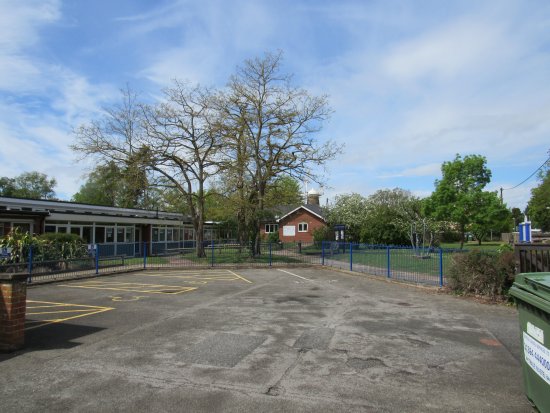
The the yellow terrace of 4 houses in the centre of this photograph is Grade two listed and they are dated as early nineteenth century. The rest of the houses between the National School, and what is now the entrance to Buttrum’s Mill, were built later.
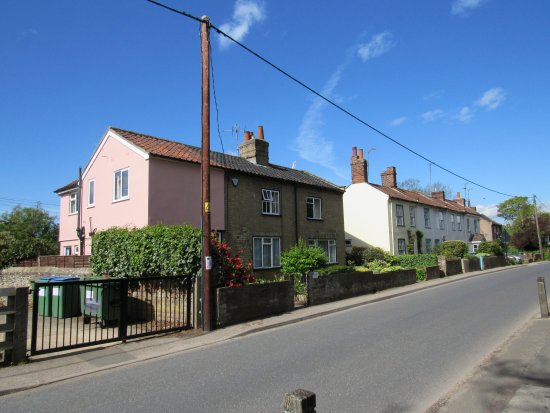
Buttrum’s Mill, a this tower windmill, was built in 1836 by William Trott for his second son Pierce. In the 1840s the mill was bought by John Buttrum and he modernised it and put in a roller mill. When John Buttrum died his wife employed a manager until their son George was old enough to take over. He operated the mill until it closed in 1928/29. In 1934 the mill was sold to Suffolk County Council. They restored it to working condition in 1954 and is now a visitor attraction.
By the lane leading to the tower windmill there is Mill House, a Grade II listed building built in the nineteenth century. Between this house and the entrance to Grundisburgh Road there is a house built sometime after 1960.
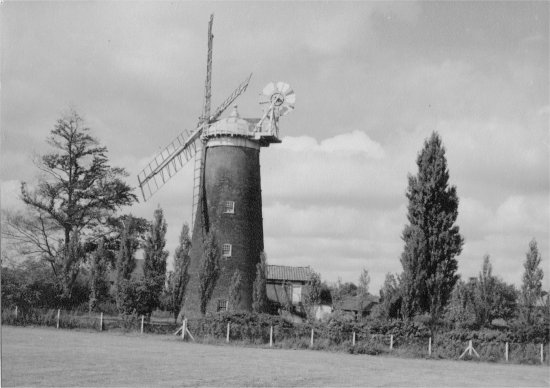
Phot161 Previous series of photographs